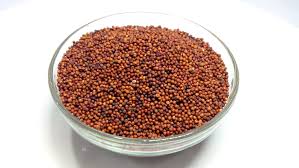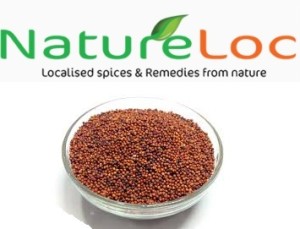Ragi (Muthary, Koovaraku , Panja pullu) Finger millet
Millets minor cereal’s varieties
Millets are minor cereals of the grass family, Poaceae. They are small seeded, annual cereal grasses, many of which are adapted to tropical and arid climates and are characterized by their ability to survive in less fertile soil. Millets include sorghum (Jowar),pearl millet (Bajra), finger millet (Ragi), foxtail millet (Kakum), proso millet(Chena), little millet (Kutki), kodo millet (Kodon), barnyard millet (Sanwa),and brown top millet.
Ragi or finger millet – small cereal with high nutritional values
Ragi or finger millet (Eleusine coracana L.) is one of the common millets in several regions of India. It is also commonly known as Koracanin Sri Lanka and by different names in Africa and has traditionally been an important millet staple food in the parts of eastern and central Africa and India
Traditionally in India, finger millet was processed by methods such as grinding, malting, and fermentation for products like beverages, porridges,idli(Indian fermented steamed cake),dosa(Indian fermented pan cake),and roti(unleavened flat bread)
Ragi or Finger millet is a short, profusely tillering plant with characteristic finger like terminal inflorescences, bearing small reddish seeds. Maturity of crop is between 3 to 6 months depending on the variety and growing conditions. The crop is adapted to fairly reliable rainfall conditions and has an extensive but shallow root system. It is an annual plant extensively grown as a cereal in the dry areas of India, especially southern part of India.
Ragi – Finger millets health benefits
Ragi contains high amount of calcium,protein with well balanced essential amino acids composition along with Vitamin A, Vitamin B and phosphorous. It also contains high amount of calcium. Ragi flour in Karnataka is mostly prepared into ragi balls, popularly known as ragi mudde, made into flat breads, leavened dosa and thinner, unleavened rotis. Its high fiber content also checks constipation, high blood cholesterol and intestinal cancer
The dietary fiber content of finger millet is much higher than the fiber content of brown rice, polished rice, and all other millets such as foxtail, little, kodo, and barnyard millet. However, the dietary fiber con-tent of finger millet is comparable to that of pearl millet and wheat. The carbohydrate content of finger millet is comparable to that of wheat but lower than that of polished rice
Ragi – Losing weight
Ragi contains very good amount of dietary fiber which helps to control weight. Because of the presence of dietary fiber and complex carbohydrates,Ragi gets digested at a slower rate than other main cereals and thus can keep one away from in taking excessive calories
Ragi (finger millet) – An excellent baby food
Finger millet (ragi) is a nutritious and versatile grain to offer to babies.It is believed that ragi promotes better digestion. The high calcium and iron content is useful for the bone growth and overall development of the infant. Specially-processed ragi powders for infants are available widely to be used during weaning.Finger millet has got good malting properties and hence is being used in the preparation of weaning foods
Diabetes – The phytochemicals present in Ragi helps to reduce that rate of carbohydrate digestion which in turn helps to maintain the blood sugar level. The polyphenols present in Ragi helps to tackle the diabetes relate cataract. The presence of dietary fiber along with polyphenols reduces the glycemic index and cholesterol
For bone health – Its rich source of calcium helps in strengthening bones. It is good source of natural calcium for growing children and adults. Consumption of ragi may help to fight diseases like osteoporosis
Read more – Ragi health benefits – Nutritional values
- What is Ragi (finger millet) റാഗി – പഞ്ഞ പുല്ല്?
- Ragi (finger millet) Dancing grain – Health benefits
- Ragi (finger millet) – An excellent baby food
























